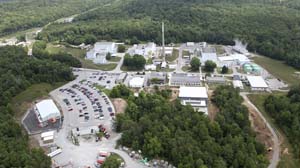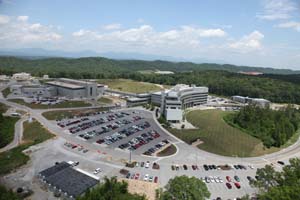Neutron Facilities at ORNL
Oak Ridge National Laboratory operates two of the world's most powerful neutron scattering user facilities: the Spallation Neutron Source and the High Flux Isotope Reactor. The pulsed neutron source at SNS and the continuous neutron source at HFIR complement each other well and, along with their state-of-the-art instruments, provide a wider range of research possibilities than ever before.
Neutron scattering research can reveal the structure and dynamics of a very wide range of materials. This diverse range of applications provides opportunities for experts in practically every scientific and technical field, and the HFIR and SNS instruments are developed with that broad range of disciplines in mind.
High Flux Isotope Reactor

At 85 megawatts, HFIR is the highest flux reactor-based source of neutrons for condensed matter research in the United States, and it provides one of the highest steady-state neutron fluxes of any research reactor in the world. The thermal and cold neutrons, intense neutron flux, constant power density, and constant-length fuel cycles are used by more than 200 researchers each year for neutron scattering research into the fundamental properties of condensed matter. HFIR has 10 instruments available for users and 1 in commissioning.
In addition to its neutron scattering capabilities, HFIR is used for production of medical, industrial, and research isotopes; research on severe neutron damage to materials; and neutron activation to examine trace elements in the environment.
Spallation Neutron Source

SNS is a one-of-a-kind research facility that provides the most intense pulsed neutron beams in the world for scientific research and industrial development. SNS produces neutrons with an accelerator-based system that delivers short (microsecond) proton pulses to a target/moderator system, where neutrons are produced by a process called spallation. State-of-the-art experiment stations provide a variety of capabilities for researchers across a broad range of disciplines, such as physics, chemistry, materials science, and biology.
With its more intense, brighter source of neutrons and world-class instrumentation, SNS provides the neutron scattering community with unprecedented research opportunities. SNS allows for measurements of greater sensitivity, higher speed, higher resolution, and in more complex sample environments than have been possible at existing neutron facilities.